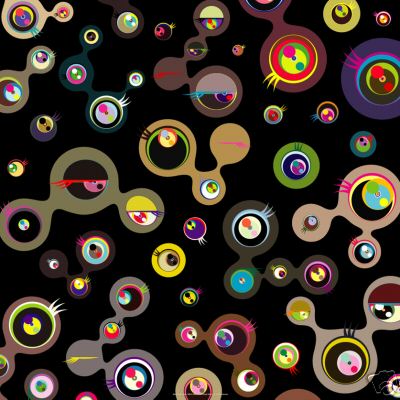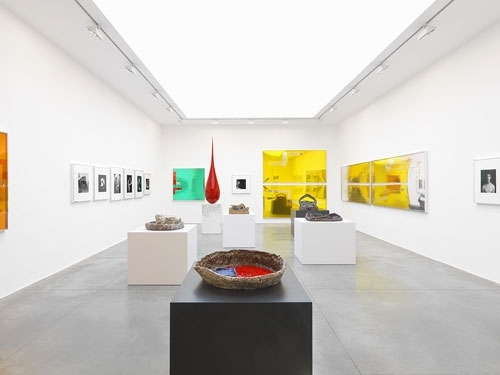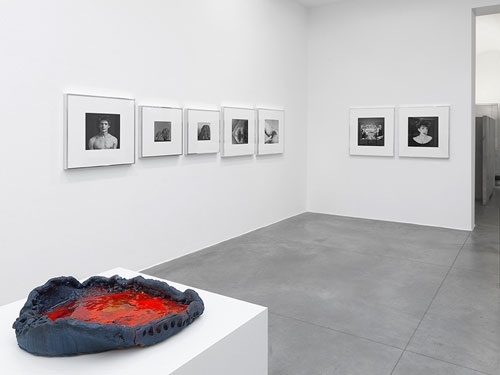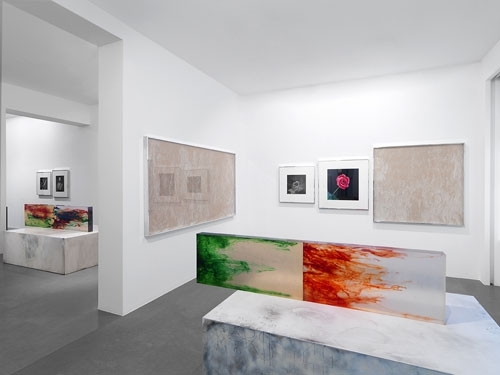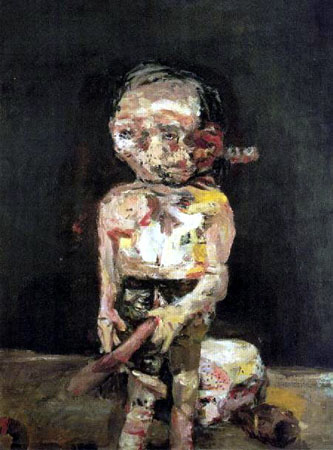Bechtler Museum of Modern Art
by Travis Jeppesen on January 29, 2010
The United States’ newest museum of modern art opened on January 2 to much fanfare locally, and very little notice on the national level. One can only speculate as to the reasons why. Perhaps the proliferation of contemporary art museums, with numerous institutions dedicated to living artists in every major city, has clouded our memory that something great happened before our narcissistic era. Perhaps many of us still haven’t overcome that ridiculous prejudice of the late 20th century that a penchant for Modernist art denigrates one as aesthetically-if not politically-conservative. Whatever the case may be, the news that one of the world’s richest and most unique private collections of mid-century European art has found a home in a region of the country where there are very few significant museums dedicated to any kind of art should not be overlooked. Equally impressive is the building itself, a hulking, monumental terra cotta structure by Mario Botta, who previously only accepted one other US commission, the San Francisco Museum of Modern Art.
The opening exhibition features 109 of some 1,400 works endowed to the city of Charlotte by Andreas Bechtler, who inherited most of the collection from his parents, Hans and Bessie Bechtler. The Bechtlers began collecting in their native Zurich in the 1950s. It is an idiosyncratic collection in the sense that it dates from a pre-speculative era, refuting both period trends and canonical gap-filling, instead reflecting the collectors’ individual tastes and their personal engagement with an artist’s oeuvre. The Bechtlers’ extensive Giacometti collection is case in point, spanning the artist’s sculpture, paintings, drawings-and very often, many of the preparatory drafts of a finished work. It is as though the Bechtlers had a frantic need to intimately absorb every step of the process that led to a work’s completion.
Rather than usurping a traditional historicizing arrangement, curator Michael Godfrey has formed an impressive symphony highlighting the diversity of the collection, whose greatest attribute is its concentration on the Bechtlers’ milieu, including notable works by Jean-Paul Riopelle, Karel Appel, Max Ernst, Georges Rouault and Nicolas de Staël.
This, in fact, is the most important aspect of the Bechtler collection – at a time when the achievements of European artists were being completely overshadowed by the chauvinistic asserts of the Abstract Expressionists and their vast support networks, European Modernism continued to evolve. But its history, at least in most American collections, seems to terminate with the rise of the New York School.
Not anymore. For a city better known as the home of NASCAR and the headquarters for Bank of America, with a reputation for constantly playing second fiddle to nearby Atlanta, the opening of the Bechtler Museum is cause for celebration and should eventually earn Charlotte a pinpoint on the art world’s map.
Discosalope
by Travis Jeppesen on January 27, 2010
TONIGHT, 27 January, SLUM presents
DISCOSALOPE, a performance by Marc-Andre Casavant
DISCOSALOPE is not completely a man and not exactly a woman.
Refreshing, amusing and disturbing…Marc-Andre Casavant’s spoken word-interactive-theatrical performance about the craziness of over-consumption in society will not leave anybody indifferent!!!
Before&after set by DJ Goddamnit.
SLUM – Berlin’s anti-art salon
Every Wednesday at
Ficken3000
Urbanstr. 70
Berlin
Doors open at 22:00; show starts at 24:00.
You’ve gotta be kidding me
by Travis Jeppesen on January 19, 2010
First Jeff Koons, now Takashi Murakami? What’s with this conspiracy to clutter Versailles’s halls with crap? I mean, what’s next? Maybe fill the Louvre with elephant shit?
Lucrecia Martel’s La mujer sin cabeza
by Travis Jeppesen on January 18, 2010
A woman driving down a dirt road runs over something. At first, she thinks it is “only” a dog (this only is always negligible; one of the points of the film), but later, after the fact, she decides in her mind that it was in fact a child. Nobody can convince her otherwise.
A woman hits something in her car and becomes free from rational existence. It is the sort of freedom she doesn’t want. She wanders through the film in an amnesiacal daze. She is surrounded by people. It is hard to tell how each character is related to her — particularly the men. Is he her brother? her lover? her husband? Is the horny teenage lesbian with hepatitis her niece or the daughter of a friend? We can’t tell because the woman doesn’t know anymore. She has lost her head. She has to dye her hair to cope with it all, to become a new person.
You can watch this film several times and still not “get” what’s going on. John Waters sums it up best in one of his quintessential one-liners, selecting La mujer sin cabeza as one of the best films of 2009 in December’s Artforum:
“Bleached hair, hit-and-run accidents, in-laws with hepatitis? Huh? I didn’t get it, but I sure did love it!”
This ambiguity is precisely what makes it worthwhile as an endeavor in narrative art. All over the Internet, people are publishing their theories of what the film means; this implies that it’s already become a sort of cult hit. I wish more writers would study this film. Like all great novels, La mujer sin cabeza is fundamentally not “about” anything. It is anti-about. Rather, it seeks to investigate a phenomenon that is so specific and personal that it winds up encompassing larger societal issues — such as class in Latin America — almost despite itself. The main theme, however, is easy to decipher. La mujer sin cabeza is a film that tackles the weighty philosophic issue of disappearance. The headless woman is suddenly confronted with an awareness that not everyone’s life is perceived to be worth the same. The child she thinks she ran over might as well be a dog; she is wealthy and educated, the child was one of the poor masses. She cannot deal with this sudden knowledge; dissociation becomes the answer.
In the end, she gets her head back, in a way. She is reassured by all those around her — both people she knows personally and those she has encountered but doesn’t know — that none of the events she experienced actually happened. In finally allowing herself to believe them, she is allowed to wear her head once more, even though it may be empty of all its contents. This is one version of freedom, perhaps.
Mark Ther @ SLUM, January 20th
by Travis Jeppesen on January 16, 2010
There will be a screening of Mark Ther’s video work on January 20th at SLUM, the anti-art salon I co-curate with Tennessee Claflin every Wednesday night at Ficken3000, Urbanstr. 70, Berlin. Doors open at 22:00; the screening will start at 1:00. The evening includes a before & after set by DJ Goddamnit.
Robert Mapplethorpe & Sterling Ruby @ Xavier Hufkens, Brussels
by Travis Jeppesen on January 15, 2010
A very strange exhibition, and one of the best I’ve seen in a long time. The show is actually Ruby’s — or more precisely, Ruby selected photographs of Mapplethrope’s and then made sculptural works responding to them. But Ruby’s work seems to have nothing to do with Mapplethorpe’s at first glance; and the more you look at the two, the more confused you become. I mean, Mapplethorpe’s work is difficult to look at, period, not because of the supposedly “transgressive” content, but because of the wall of discourse that’s been built up around it since the artist’s untimely death. You can’t look at a Mapplethorpe without thinking, “This is a Mapplethorpe,” and most people’s thoughts don’t get much further past that.
To Ruby’s credit, he does not always go for the most obvious images — the ones that all of us have seen time and again — the black cocks and the celebrity portraits and Mapplethorpe shoving things up his butthole. Rather, Ruby has chosen works that are more interesting from a formal perspective, if only accidentally so. It is either ironic or symptomatic of Mapplethorpe’s over-exposure as an artist that the best photograph in the exhibition is devoid of human figures. Texas Gallery, a work from 1980, showcases a single strip of sunlight leaking out from behind a curtain across the floor of an art gallery.
Ruby’s “response” to these works is powerful and disruptive. Whereas Mapplethorpe’s photographs appear to be concrete, offering a direct line towards a simple understanding of each image, Ruby’s work is abstract, bombastic, and not at all easy to understand or look at.
Ruby offers four predominant types of work in the Xavier Hufkens exhibition. The Transcompositional series utilizes different shades of shiny mirror acrylic as canvas and affixes usually one or two small photos of pre- and post-op trannies, then splatters the overall picture (not profusely) with drops of blood red nail polish. This type of work positions itself somewhere between sculpture and painting, or perhaps fits into the ongoing re-definition of painting that has been happening for the last few years (this is the subject of a future piece of writing that I’m working on.) Then, in the first room, you encounter a series of ceramics, which are probably the most outrageous pieces in the show. They look almost excremental — like obscenely long snakey turds someone has tried to weave into baskets, then painted over, only to have them fall in on themselves, collapse into wasteful designs; pools of shiny colorful paint occasionally emerge inside the ceramics; they are sublime.
In a recent inteview, Ruby discussed the influence of Donald Judd on his work, the dogmatism surrounding “pure” minimalism. The proliferation of minimalism and Judd’s writing in art schools today, bordering on indoctrination. How Ruby’s impulse was to simultaneously give in to that dogmatism, to that type of work, while wanting to deface it. The consequences of this impulse have been some of Ruby’s most talked about sculptures to date, several of which are included in the Xavier Hufkens show. Massive wooden blocks, reminiscent of Judd’s metal blocks, only painted on, defaced, with graffiti-esque tags and symbols and AbEx-esque paint splatterings. He takes the language of classical minimalism and deforms it towards his own ends, oftentimes stacking the structures to make them resemble cock and balls, such as the massive (390 x 443 x 122 cm) phallus Headless Dick/Mapplethorpe (2009).
Next to the phallus are twin towers from the Monument Stalagmite series. Constructed out of several media, they look as though they are melting, candle-like. The one is subtitled Visine Dream, while the yellow one is Adultism Pissing. Bodily fluids are referenced throughout the exhibition; they seem to form the dominant motif. Not just blood and shit; two paintings are just white acrylic paint sprinkled across a beige, unreadable surface; they look like cum. These fluids, of course, have an allegorical significance to the sexually charged work of Mapplethorpe, who died of AIDS. But the fluids themselves are missing from the photographs. In a way, one can say that, while Mapplethorpe captured surface transgressions, Ruby’s response has been to take the inside outside and shove it in our faces. Sculpture seems to be the most potent medium for accomplishing this.
This weekend, the show of another artist who died of AIDS opens in Brussels, Felix Gonzalez-Torres. The show is curated by Elena Filipovic, but mid-way through the exhibition, artist Danh Vo will stage a curatorial “remix” of the show. You can’t help but draw comparisons to Ruby’s project. Maybe this is a turn towards a more general trend, the artist-as-curator.
The Art of Two Germanys
by Travis Jeppesen on January 10, 2010
My review of The Art of Two Germanys just went online at Whitehot Magazine of Contemporary Art.
Baselitz & bad painting/the making of suiciders
by Travis Jeppesen on January 8, 2010
Lately I’ve been thinking a lot about Georg Baselitz and his notion of “bad painting.” How this might correspond to writing, “bad writing.” To write badly on purpose. There is not much of a history to this anti-tradition in literature. Kathy Acker was one of the few writers who openly did it, then there’s the Flarfists and some of the conceptual poets (Kenny Goldsmith, et. al.), but the former seem to be doing it as a joke, while the latter tend to be so boring and academic that who really gives a fuck — no one really reads it, no one cares.
Conceptual poetry suffers from the disease of being merely interesting.
Even if the people doing Flarf take it seriously, the fact that they’ve given it a name has essentially ruined it. Group identity = institutionalization.
Another “bad writing” milestone — Finnegans Wake.
Joyce didn’t encourage others to follow in his path.
Perhaps nearly everything Gertrude Stein ever wrote could be classed under “bad writing.”
In order to arrive at a definition of what these artists and writers are doing, we have to grapple with the question of intentionality.
Just as there are supposedly “eternal values” in art, there are also eternal vulgarities that permeate our civilization. Certain artists take the initiative of choosing to set a bad example. To do so is to take a moral stance, to put forth a system of values that runs counter to dominant social values. To affirm what is otherwise, at best, negotiable. The painting above, The Big Night Down the Drain, scandalized the German art world when it was first exhibited in 1963. Painting an ugly dwarf with a huge cock is bad taste enough; the fact that it was so crudely painted made it even worse. Baselitz could have alleviated the strain of the controversy by pointing to others who have made similar gestures, by giving it a name, by forming a group identity. But he stood alone. (Which is not to say that others didn’t assign his work to the archives of German Expressionism or international Neo-Expressionism; but as far as I know, Baselitz himself has never admitted to being a card-carrying member of any movement or genre.)
However hesitant we might be to admit it, the vast majority of art and literature is executed in slavish conformity to societal norms. When Philip Roth sets out to write a novel, he is consciously writing towards a tradition; when Baselitz makes a painting, he is also working towards tradition, but it is a tradition of being anti-tradition.
What does it mean to set out to write the ultimate “bad novel.” Not just bad as in subject matter, but method — grammar, syntax, narrative — not to intentionally be wrong, but to not care about the possibility of getting it all wrong. Everything you are told not to do in writing. Critics would be forced to come with a new language to praise or reject it — neither an enviable nor a pitiable task. But as a project, perhaps it represents one way forward — or at least a way of correcting certain age-old prejudices.
Italian Futurism in Czech and English
by Travis Jeppesen on January 4, 2010
I recently started writing forLiterarni Noviny, a Czech-language publication. You can now read my first article for them, a review of Languages of Futurism at Martin-Gropius-Bau, on Whitehot Magazine of Contemporary Art, in the original English.
Kandis Williams @ SLUM, December 16th at 22:00
by Travis Jeppesen on December 11, 2009
SLUM is pleased to announce a one-night installation by American artist Kandis Williams.
Williams will present a series of collages that replicate the interiors of the vagina, using black-and-white photocopies from many sources, including hardcore porn, African sculpture, and film stills.
http://www.kandiswilliams.com/
The night will also include a DJ set by Gonoretard.
SLUM is held every Wednesday at 22:00, at
Ficken3000, Urbanstr. 70, Berlin





